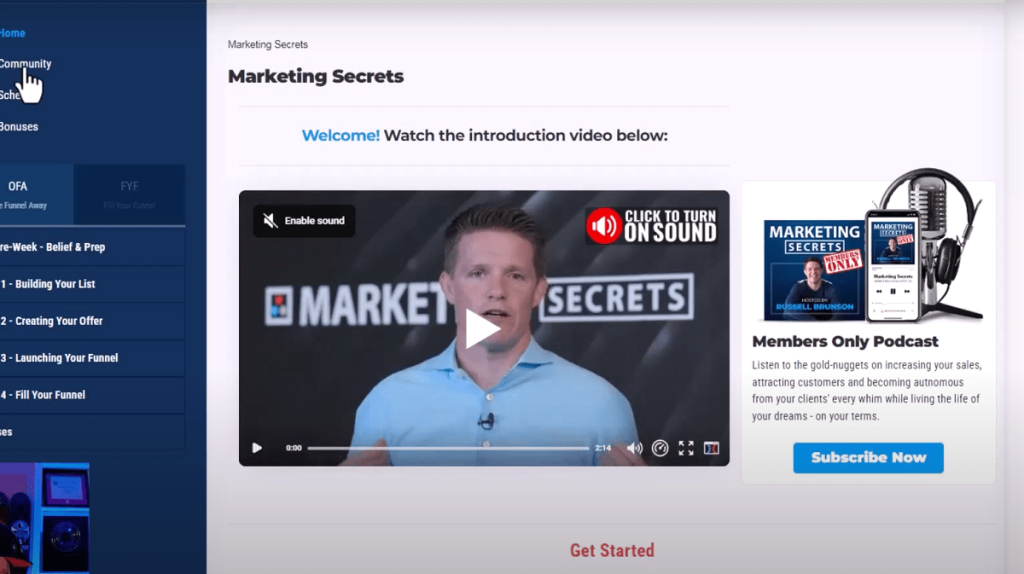Building a sales funnel typically takes several weeks to a few months. In this process, businesses create a step-by-step system to guide potential customers from awareness to purchase, maximizing conversions and streamlining the sales process.
This involves strategizing, creating content, designing landing pages, setting up email marketing campaigns, and implementing automation tools. The length of time it takes to build a sales funnel depends on various factors such as the complexity of the funnel, the resources available, and the level of expertise in marketing and sales.
By following best practices and closely monitoring performance, businesses can ensure an effective sales funnel that delivers consistent results.
Understanding The Sales Funnel Journey
Understanding the sales funnel journey is crucial in determining how long it takes to build one. The sales funnel consists of various stages that guide potential customers through the buying process. Each stage serves a specific purpose in moving prospects closer to making a purchase.
From awareness to consideration and finally, to conversion, the sales funnel plays a vital role in nurturing leads. A well-designed funnel is essential for effective lead generation and conversion. It ensures that every touchpoint delivers a seamless experience, captures leads, and nurtures them towards becoming customers.
By strategically optimizing each stage, businesses can streamline the sales process and shorten the time it takes to build a sales funnel. The goal is to create a funnel that efficiently guides prospects towards making a purchase while maximizing conversions and minimizing drop-offs.

Preparing For Sales Funnel Creation
Preparing for sales funnel creation involves setting clear goals and objectives. Identifying the target audience is crucial for effective funnel development. To ensure success, conducting thorough market research is necessary to understand customer needs and preferences. By clearly defining objectives and understanding the target audience, businesses can create a sales funnel that resonates with potential customers.
A well-designed sales funnel can help guide leads through the buyer’s journey, ultimately converting them into paying customers. So, take the time to plan and strategize your sales funnel creation process to set your business up for success. Remember, understanding your audience and setting clear goals are key to building an effective sales funnel.
Step 1: Attracting Potential Customers
Building a sales funnel takes time and involves several crucial steps. The first step is attracting potential customers. To achieve this, you need to develop a comprehensive content strategy that aligns with your target audience’s needs and interests. It’s important to implement effective seo techniques to optimize your content for search engines.
Additionally, leveraging social media platforms can help broaden your reach and attract more potential customers to your sales funnel. By creating valuable and engaging content, optimizing it for search engines, and utilizing social media platforms, you can gradually build a successful sales funnel that drives conversions and boosts your business’s growth.
Keep in mind that the time it takes to build a sales funnel may vary depending on your industry, target audience, and the resources you allocate to this process. So, stay consistent and be patient in your efforts.
Step 2: Capturing Leads
Building a sales funnel doesn’t happen overnight. Step 2 focuses on capturing leads, a crucial stage in the process. To entice potential customers, you need compelling lead magnets. These are valuable resources or incentives that persuade visitors to provide their contact information.
Next, designing captivating landing pages helps increase conversions. These pages should be visually appealing, informative, and encourage visitors to take action. Optimizing website forms is also vital. Forms should be simple, user-friendly, and ask for only essential information. By streamlining the form-filling process, you improve the chances of capturing leads.
Building an effective sales funnel takes time and effort, but by implementing these strategies, you can attract and convert leads into customers. Remember, engaging content and user-friendly experiences are keys to success.
Step 3: Nurturing Leads
Building a sales funnel doesn’t have a fixed timeframe. Nurturing leads is vital for success. Implementing an email marketing campaign allows consistent communication. Providing valuable content and resources helps build relationships. Personalizing the communication makes leads feel important and engaged.
These strategies contribute to an effective sales funnel.
Step 4: Converting Leads Into Customers
Developing a persuasive sales pitch is crucial in converting leads into customers. Utilizing effective sales techniques such as storytelling and personalization can greatly enhance your pitch. Streamlining the buying process is equally important to keep potential customers engaged. By optimizing your website for easy navigation, providing clear and concise product information, and offering seamless online payment options, you can minimize friction in the buying journey.
Remember to address pain points and showcase the value your product or service brings. Building trust through testimonials or case studies can also help in converting leads into customers. With a well-crafted sales pitch and a streamlined buying process, you can accelerate the time it takes to build a successful sales funnel.
Step 5: Retaining Customers
Building customer loyalty through follow-ups is a crucial step in retaining customers and maximizing sales funnel effectiveness. By implementing customer retention strategies, you can ensure that your customers feel valued and connected to your brand. This can be achieved by regularly following up with customers, addressing their concerns, and providing personalized recommendations.
Encouraging referrals and testimonials can also play a significant role in building customer loyalty. Satisfied customers are more likely to recommend your products or services to their friends and family, which can lead to increased sales and brand awareness. By focusing on these strategies, you can create a strong bond with your customers, increasing their lifetime value and ultimately driving business growth.
Sales Funnel Tools And Platforms
A sales funnel can take varying lengths of time to build, depending on several factors. Numerous sales funnel tools and platforms are available to aid in the process. Exploring different sales funnel software options is crucial for finding the right fit.
Integrating crm systems is an essential aspect of streamlining the sales funnel. It allows for better customer relationship management and efficient tracking of leads. Performance tracking and analysis tools help gauge the effectiveness of the sales funnel. By monitoring key metrics, businesses can identify areas for improvement and optimize their funnel for better conversions.
Factors Affecting Sales Funnel Development Time
Factors such as industry complexity and target market intricacy play a significant role in determining the time required to build a sales funnel. The available resources and budget also impact the development process. Additionally, the expertise and experience of the team handling the project can greatly influence the timeline.
Each industry and target market presents unique challenges that must be considered and addressed. Adequate resources and budget allow for the implementation of necessary strategies and tools. Moreover, a skilled and experienced team can expedite the process through their knowledge and expertise.
Ultimately, the time it takes to build a sales funnel varies based on these factors, and proper planning and execution are crucial for success.
Case Studies: How Long Did It Take?
Case studies provide valuable insights into the timelines for building a sales funnel. Real-life examples showcase both success stories and challenges faced. These examples shed light on how long it took businesses to develop their sales funnels, offering practical knowledge for others.
These case studies demonstrate the uniqueness of each process, emphasizing the need for a tailored approach. By examining different scenarios, businesses can gain a better understanding of the factors influencing the duration of building a sales funnel. From planning and strategizing to implementation and optimization, each step plays a crucial role in achieving success.
By learning from these experiences, businesses can fine-tune their own timelines and adapt their strategies accordingly. The key takeaway is that building a sales funnel requires careful planning and execution, and the specific timeline can vary depending on various factors such as industry, target audience, and resources available.
Frequently Asked Questions For How Long Does It Take To Build A Sales Funnel?
How Long Does It Typically Take To Build A Sales Funnel?
Building a sales funnel can take anywhere from a few weeks to several months, depending on the complexity and scope of the project. Factors such as the number of stages, content creation, and integration with other marketing tools can impact the timeline.
What Are The Key Stages Involved In Building A Sales Funnel?
The key stages in building a sales funnel include awareness, interest, consideration, and conversion. Each stage involves specific strategies and tactics to move prospects from being aware of your brand to becoming paying customers.
How Important Is Content Creation For A Sales Funnel?
Content creation plays a crucial role in a sales funnel. Engaging and informative content helps attract prospects, build brand authority, and nurture leads through the various stages of the funnel. Well-crafted content can drive conversions and improve the overall effectiveness of the funnel.
Can A Sales Funnel Be Customized To Fit My Business Needs?
Yes, a sales funnel can be customized to fit your specific business needs. By understanding your target audience, goals, and unique selling proposition, you can tailor the stages, messaging, and tactics within the sales funnel to align with your business objectives and maximize results.
Conclusion
Building a sales funnel is a crucial aspect of any successful online business. It establishes a systematic approach to converting leads into customers, resulting in increased sales and profitability. While the time it takes to build a sales funnel can vary based on several factors, such as your industry, resources, and target audience, it is essential to approach the process with patience and a well-defined strategy.
By taking the time to research, plan, and implement effective tactics, you can create a sales funnel that aligns with your business goals and maximizes your conversions. Remember to thoroughly understand your target audience, create compelling and relevant content, and regularly analyze and optimize your funnel for better results.
Ultimately, building a successful sales funnel requires ongoing effort and adaptation, but the rewards in terms of revenue growth and customer loyalty make it a worthwhile investment.

With my experience in Online marketing now mission is to equip and arm you with the precise online marketing tools, useful resources, marketing strategies, and tactics to help you make IMPACT, SERVE more and EXPLODE your online income so you can live life on your own terms. Visit my Other profiles like Reddit, Instagram and Quora.

